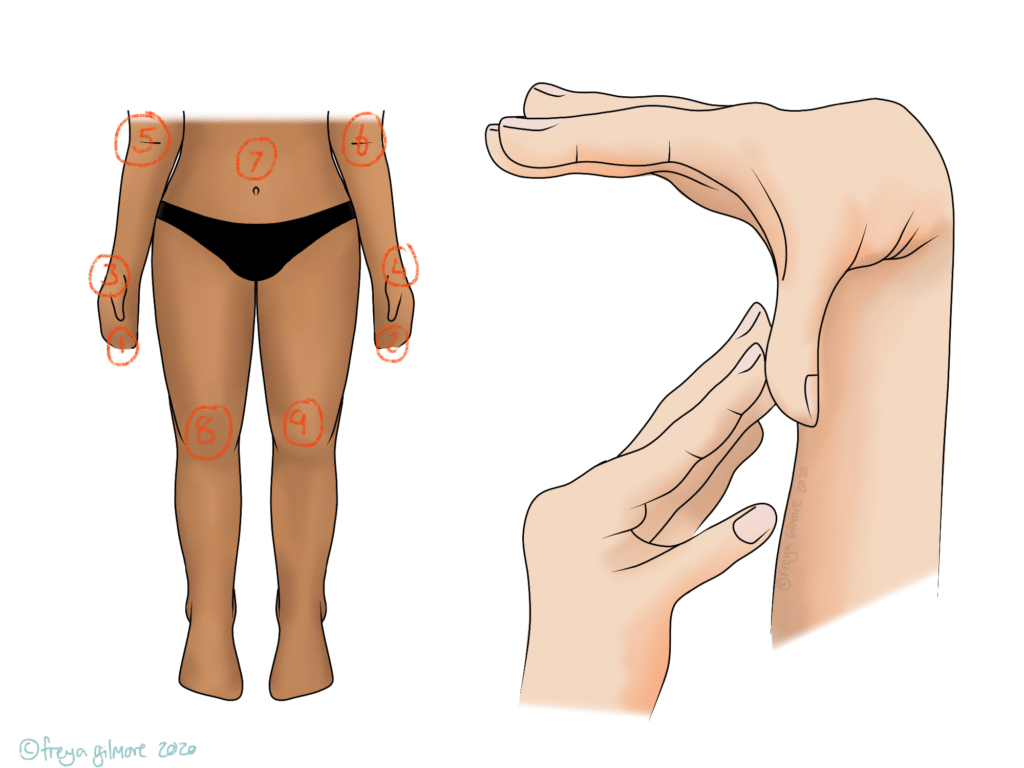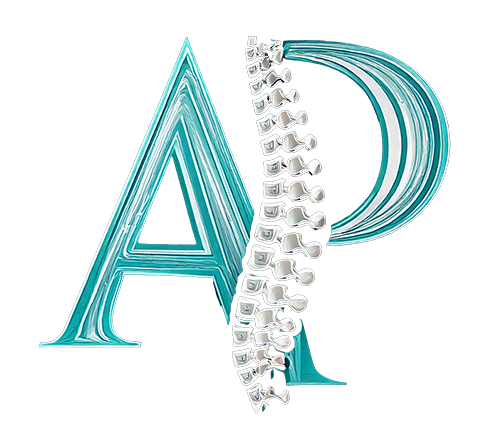Hypermobility
Hypermobility refers to joints that are more flexible than average. Some people are generally quite “bendy”, whereas for others it can be a sign of another condition. The NHS says that about 1/30 people are hypermobile.

Managing Hypermobility
Your osteopath needs to be aware of your hypermobile joints, as they can play a role in both your initial problem, and your treatment plan. If your hypermobility is caused by a condition, it may be the case that your ligaments undergo more damage than the average person, and they do not heal as well. This will need to be taken into account by your osteopath.
The image above shows 9 points on the body. These are the points used to measure a person’s hypermobility on the Beighton Scale. Your osteopath can test these quickly, observing you standing with your knees and elbows locked, bending forwards to touch the floor, and bending your thumb and fingers back on both hands. We then have a number to give an idea of roughly how hypermobile you are.
Of course this does not test all joints, and if you have particularly mobile hips, you could still score 0. Your osteopath will take your whole case history into account and assess your body thoroughly at your appointment.
Related Conditions
Some connective tissue disorders cause hypermobile joints. Having one of these conditions may mean that you are more likely to develop joint pain or dislocations.
Ehlers-Danlos Syndrome (EDS)
There are a number of different forms of EDS, but a number of them present with hypermobile joints. Hypermobile EDS is the most common type. Other signs of EDS may be unusually stretchy skin, scoliosis, or a more pronounced kyphosis. Some forms of EDS are genetic, but not all.
Marfan Syndrome
Marfan is less common than EDS, but there are a lot of similarities between the two. The symptoms of Marfan Syndrome begin to develop in late adolescence. As with EDS, hypermobile joints and a scoliosis are common features. In adulthood, there may be early onset osteoarthritis, especially in the hips. Recurrent soft tissue injuries are also common alongside joint pain.
Down’s Syndrome
Joint laxity is considered “almost universal” in children with Down’s Syndrome. This commonly causes flat feet, which is associated with later development of walking. Hips and ankles are often affected, and the bones in the neck may be unstable.
Local Hypermobility
After an injury such as a joint dislocation, the ligaments and capsule of that joint may become lax. Their role is to prevent the joint moving too far, so when they are not in their best condition, the joint is more likely to dislocate again. Repeated dislocations may predispose the joint to developing arthritis. Unfortunately, ligaments take a long time to heal, and often do not return to their original condition. You may have noticed this yourself after a bad sprain.
One way to support a joint with lax ligaments is to help the surrounding muscles support the joint. Your osteopath can give you exercises to strengthen the relevant muscles as part of your treatment plan. We will work with you to find a way that suits you, whether that means using machines at the gym, or a small weight at home.
If you have joint pain alongside hypermobility, you can book an appointment here.

